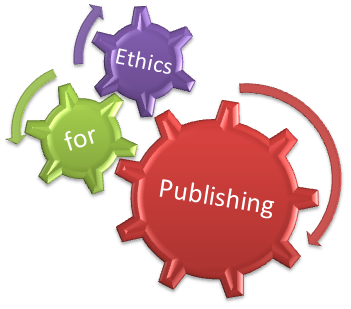Improved Takagi Sugeno Fuzzy Modeling with FLEXFIS-Overlapping Clustering Approach for Efficient Classification Under Conflicts of Interest
(*) Corresponding author
DOI's assignment:
the author of the article can submit here a request for assignment of a DOI number to this resource!
Cost of the service: euros 10,00 (for a DOI)
Abstract
Takagi Sugeno Fuzzy models have been successfully applied to a number of scientific and engineering problems during recent years. A lot of investigations have been done to modify systematic design of Takagi Sugeno fuzzy model. Besides the other, FLEXFIS algorithm is widely used to improve the learning process of Takagi Sugeno model. However, the performance of FLEXFIS algorithm lacks when using the microarray gene expression data i.e. there may be a chance of identifying same data item in two clusters. This will produce the conflict while taking decision about the availability of the data set present in the particular cluster (rule). So to avoid such drawbacks in the existing FLEXFIS algorithm a new technique is proposed in this paper. The proposed method comprises of two stages viz., FLEXFIS with overlapping clustering approach and conflict analysis. The Takagi Sugeno Fuzzy model uses the improved version of FLEXFIS with overlapping clustering approach to cluster the incoming data into the respective clusters. The conflict analysis is performed on the resulting clustered data from the previous stage. The identification and analysis of the data which are present in more than one cluster based on similarities in the behavior is considered. The partitioning of the data into a particular cluster or rule base in a defined manner is carried out in the conflict analysis phase. The implementation result shows the effectiveness of proposed conflict analysis technique in clustering the data in a defined cluster. The performance of the proposed conflict analysis technique is evaluated by conducting different experiments on different microarray gene expression datasets. Moreover, the performance of the proposed technique is compared with the existing FLEXFIS algorithm. The comparison result shows that the proposed technique more accurately clusters the gene data into their corresponding cluster or rule than the existing approach.
Copyright © 2013 Praise Worthy Prize - All rights reserved.
Keywords
References
L.A. Zadeh,“Fuzzy Sets”, Information and Control, 8, 338- 353, 1965.
Euntai Kim, Minkee Park, Seungwoo Kim, and Mignon Park, “A Transformed Input-Domain Approach to Fuzzy Modeling”, IEEE Transactions on fuzzy systems, Vol. 6, No. 4, pp.596-604,1998.
Vinod Kumar and R.R.Joshi,“Hybrid Controller based Intelligent Speed Control of Induction Motor”, Journal of Theoretical and Applied Information Technology, Vol.3, No.1, pp.71-75, 2005.
Ahmed Mustafa, Aisha-Hassan A. Hashim, Othman Khalifa and Shihab A. Hamed, “Adaptive Emotional Personality Model based on Fuzzy Logic Interpretation of Five Factor Theory”, International Journal of Signal Processing (SPIJ), Vol. 2, No.4, pp.1-9, 2008.
Hans Roubos and Magne Setnes, “Compact and Transparent Fuzzy Models and Classifiers Through Iterative Complexity Reduction”, IEEE Transactions on fuzzy systems,Vol.9,No.4, pp.516-524, 2001.
Ali Hakan Isik and Inan Guler, “Novel Approach for Optimization of Cell Planning and Capacity”, International journal of communications, Vol. 3, No.1,pp.1-8,2009.
Curtis E. Woodcock and Sucharita Gopal, “Fuzzy set theory and thematic maps: accuracy assessment and area estimation”, Int. J. Geographical information science, Vol. 14, No. 2, pp.153- 172, 2000.
M. Zeraoulia, A. Mamoune, H. Mangel and M.E.H. Benbouzid, “A Simple Fuzzy Logic Approach for Induction Motors Stator Condition Monitoring”, J. Electrical Systems, Vol.1, No.1, pp.15-25, 2005.
K.Angayarkkani and N.Radhakrishnan, “Efficient Forest Fire Detection System: A Spatial Data Mining and Image Processing Based Approach”,IJCSNS International Journal of Computer Science and Network Security, Vol.9 No.3, pp. 100-107, 2009.
Disha Sharma, “Designing and Modeling Fuzzy Control Systems”, International Journal of Computer Applications, Vol. 16, No.1, pp.46-53, 2011.
A.Rajagopalan, G. Washington, G. Rizzoni, and. Y.Guezennec., "Development of Fuzzy Logic and Neural Network Control and Advanced Emissions Modeling for Parallel Hybrid Vehicles", Subcontract Report, Center for Automotive Research , 2003.
Magne Setnes, Robert Babuska, Uzay Kaymak, and Hans R. van Nauta Lemke, “Similarity Measures in Fuzzy Rule Base Simplification”, IEEE Transactions on systems, man, and cybernetics—part b: cybernetics, Vol. 28, No. 3,pp.376-386, 1998.
T. Takagi and M. Sugeno, “Fuzzy identification of systems and its application to modeling and control”, IEEE Transactions on Systems, Man and Cybernetics, Vol.15, No.1, pp.116-132, 1985.
Edwin Lughofer, Eyke Hullermeier and Erich-Peter Klement, “Improving the interpretability of data-driven evolving fuzzy systems”, Proceedings of the Joint 4th Conference of the European Society for Fuzzy Logic and Technology and the 11th Rencontres Francophones sur la Logique Floue et ses Applications EUSFLAT, pp.28-33, 2005.
Abonyi, J., Babuska, R., and Szeifert, F., “Modified Gath-Geva fuzzy clustering for identification of Takagi-Sugeno fuzzy models”, IEEE Transactions on Systems, Man, and Cybernetics, Part B: Cybernetics, Vol.32, No.5, pp. 612 – 621, 2002.
Abonyi, J., Roubos, J.A., Oosterom, M., and Szeifert, F., “Compact TS-Fuzzy Models through Clustering and OLS plus FIS Model Reduction”, Proceedings of the 10th IEEE International Conference on Fuzzy Systems held in Melbourne, Australia, pp.1420 – 1423, 2001.
Edwin David Lughofer, “FLEXFIS: A Robust Incremental Learning Approach for Evolving Takagi–Sugeno Fuzzy Models”, IEEE Transactions on fuzzy systems, Vol. 16, No. 6, pp. 1393-1410, 2008.
Yuehui Chen, Bo Yang, Ajith Abraham, and Lizhi Peng,“Automatic Design of Hierarchical Takagi–Sugeno Type Fuzzy Systems Using Evolutionary Algorithms”, IEEE Transactions on fuzzy systems, Vol. 15, No. 3, pp. 385-397,2007.
Cheng-Jian Lin, Cheng-Hung Chen, and Chin-Teng Lin, “A Hybrid of Cooperative Particle Swarm Optimization and Cultural Algorithm for Neural Fuzzy Networks and Its Prediction Applications”, IEEE Transactions on systems, man, and cybernetics—part c: applications and reviews, Vol. 39, No. 1, pp. 55-68, 2009.
Chia-Feng Juang, Che-Meng Hsiao, and Chia-Hung Hsu, “Hierarchical Cluster-Based Multispecies Particle-Swarm Optimization for Fuzzy-System Optimization”, IEEE Transactions on fuzzy systems, Vol. 8, No. 1, pp.14-26, 2010.
Oscar Cordon, “A historical review of evolutionary learning methods for Mamdani-type fuzzy rule-based systems: Designing interpretable genetic fuzzy systems”, International Journal of Approximate Reasoning, Vol.52, No. 6, pp.894–913, 2011.
http://www.broadinstitute.org/cancer/software/
genepattern/datasets/
http://www.broadinstitute.org/cgi-bin/cancer/datasets.cgi
http://en.wikipedia.org/wiki/Sensitivity_and_specificity
Dag, Gulcihan, Bagriyanik and Mustafa, "Controlling Unscheduled Flows Using Fuzzy Set Theory and Genetic Algorithms", International Review of Electrical Engineering, Vol. 5, No. 1, pp. 185-193, 2010
Shemshadi, Bathaee, Azirani, Akbari, Kashani and Jalali, "Design of Sugeno-Type Fuzzy Logic Controller for Torque Distribution in a Parallel Hybrid Vehicle", International Review of Electrical Engineering, Vol. 5, No. 2, pp. 536-541, 2010
Barazane, Khwaldeh, Krishan and Ouiguini, "Optimization by Gaussian Radial Basis Function Neural Network of the performance of induction motor system based on new linguistic fuzzy model", International Review of Electrical Engineering, Vol. 3, No. 2, pp. 344-354, 2008
Refbacks
- There are currently no refbacks.
Please send any question about this web site to info@praiseworthyprize.com
Copyright © 2005-2024 Praise Worthy Prize







